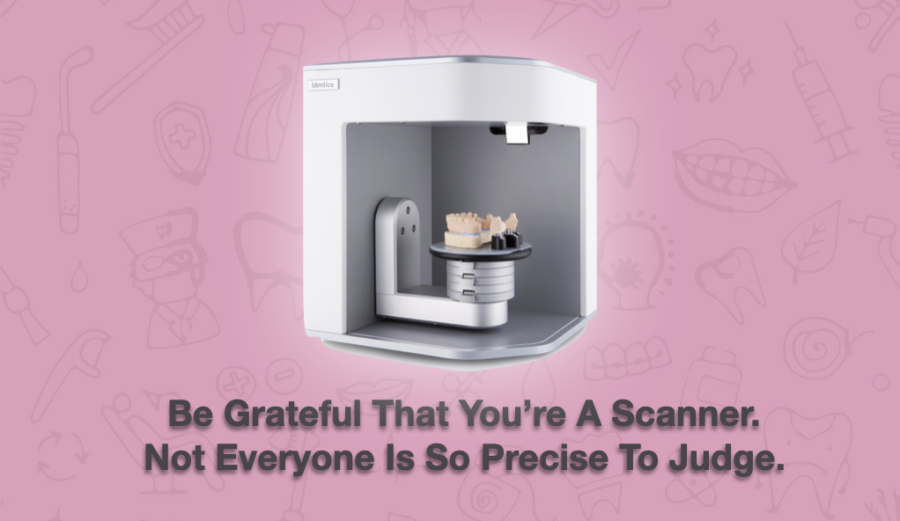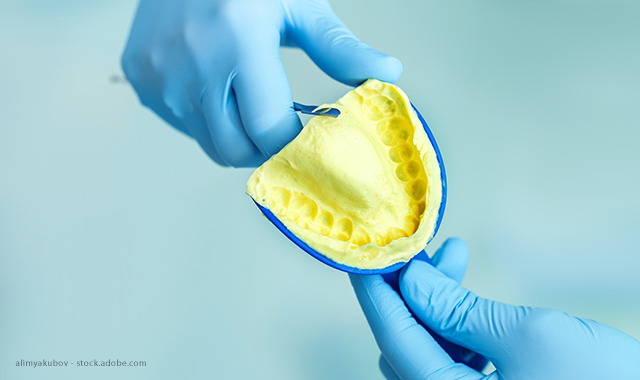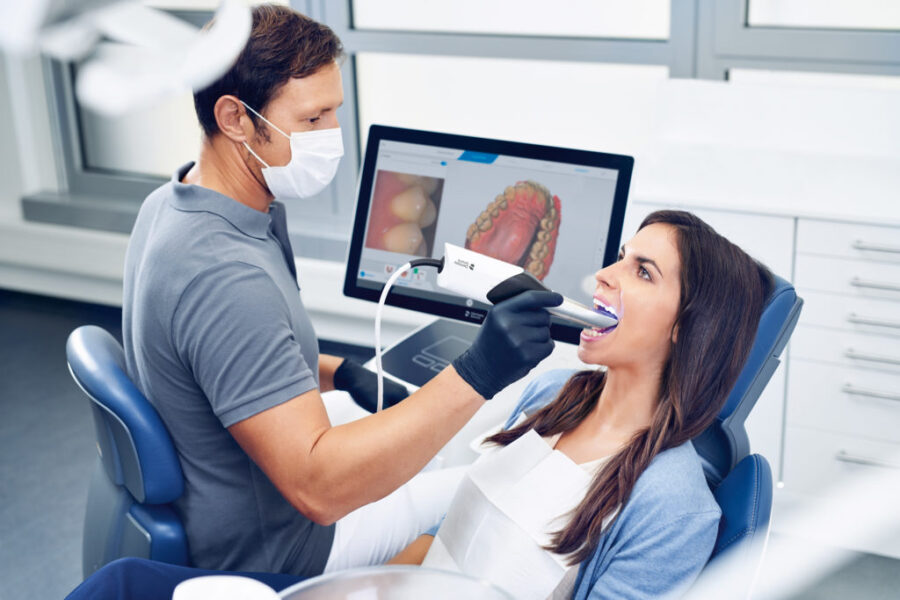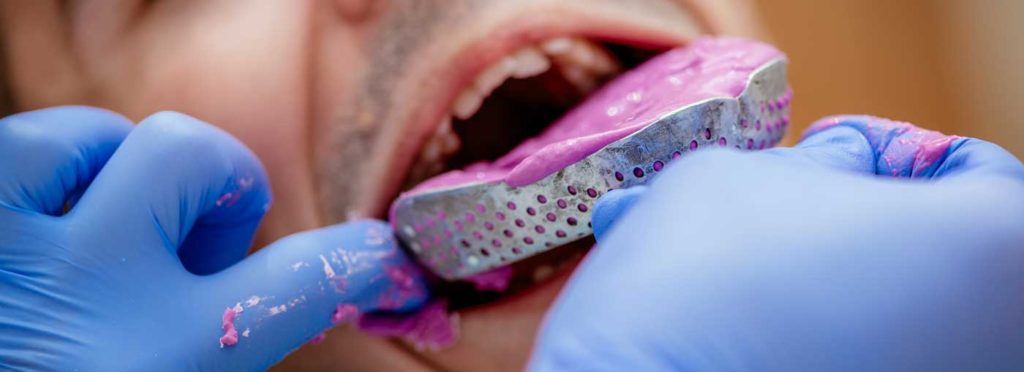The debate between intraoral and conventional dental impressions has taken centre stage in the rapidly changing field of dentistry, where technology is constantly influencing the way professionals approach providing oral healthcare. At the heart of your dental experience is a tale of accuracy, patient comfort, and efficiency. Join us as we set out on this journey to unravel the secrets of these two unique approaches, paying close attention to the wisdom offered by Dr. Chirag Chamria of Royal Dental Clinics.
Understand: Conventional Impressions
Conventional impressions, the seasoned artisan of dental techniques, involve a traditional but effective process. Here, a tray filled with a putty-like material is carefully placed in the patient’s mouth, creating a mould that mirrors the contours of their teeth. This time-tested approach captures a three-dimensional imprint of the dental structure. The process begins with the dentist selecting the appropriate-sized tray, ensuring it accommodates the patient’s mouth comfortably.

The chosen impression material, typically a combination of alginate or polyvinyl siloxane, is then mixed and placed evenly into the tray. The patient is asked to bite down, allowing the material to envelop the teeth and gums. Once set, the tray is removed, revealing a detailed negative impression that serves as the foundation for further dental work.
Materials Used in Conventional Impressions
Alginate: A seaweed-derived material, is a common choice for preliminary impressions. It’s quick-setting and cost-effective, making it suitable for various dental procedures.
Polyvinyl Siloxane (PVS): Known for its high accuracy and stability, PVS is a silicone-based material often used for final impressions. It provides a detailed and dimensionally stable mold, essential for creating precise dental prosthetics.
Advantages and Disadvantages of Conventional Impressions
Advantages:
Proven Accuracy: Conventional impressions are renowned for their accuracy in replicating the patient’s dental anatomy. This is crucial for creating well-fitted crowns, bridges, and other prosthetics.
Cost-Effective: In terms of materials and equipment, conventional impressions are often more budget-friendly compared to their digital counterparts, making them an economically sound choice.
Wide Acceptance: Dentists worldwide are familiar with conventional impression techniques, contributing to their widespread acceptance and utilization.

Disadvantages:
Patient Discomfort: The process can be uncomfortable for some patients, particularly those with a strong gag reflex. The need to bite down on the impression material may cause temporary discomfort.
Time-consuming: Compared to intraoral impressions, conventional methods can be more time-consuming. The setting time of the impression material, combined with the meticulous process, may extend chair time.
Potential for Errors: Human error in mixing or placing the impression material may occur, leading to inaccuracies in the final mold.
Exploring Intraoral Impressions
Intraoral impressions, the contemporary virtuoso in the realm of dental techniques, harness the power of digital technology to capture precise details of the oral environment. The process involves a handheld intraoral scanner, a device that resembles a wand, which is skilfully manoeuvred around the patient’s mouth to create a digital map of their teeth and surrounding structures. The journey begins with the dentist selecting the appropriate intraoral scanner for the specific procedure.

The scanner is equipped with a small camera that captures high-resolution images as it glides over the teeth and soft tissues. These images are then instantly compiled to construct a comprehensive 3D model of the patient’s oral anatomy. Dr. Chirag Chamria notes that this method eliminates the need for messy impression materials and offers a more comfortable experience for patients.
Types of Intraoral Scanners Available
- Intraoral Camera Scanners: These scanners use a small camera to capture images of the oral cavity. They are portable and user-friendly, allowing dentists to navigate the scanner with ease.
- Laser Scanners: Utilizing laser technology, these scanners provide highly accurate and detailed images. They are particularly effective in capturing intricate dental structures for applications such as crown and bridge work.
- Structured Light Scanners: These scanners project a structured light pattern onto the dental surface, capturing the deformation of the pattern to create a digital impression. They are known for their speed and accuracy.
Advantages and Disadvantages of Intraoral Impressions
Advantages:
Precision and Accuracy: Intraoral scanners excel at capturing intricate details with exceptional precision, offering a more accurate representation of the patient’s dental anatomy.
Time Efficiency: The digital nature of intraoral impressions significantly reduces chair time. The real-time compilation of images eliminates the need for setting materials, expediting the overall process.
Patient Comfort: With no need for traditional impression materials, patients experience a more comfortable procedure. The digital scanning process is non-invasive and minimizes the discomfort associated with traditional molds.
Disadvantages:
Cost: Intraoral scanners and associated technology can be relatively expensive to acquire and maintain, potentially increasing the overall cost of dental procedures.
Learning Curve: Dentists and dental staff may require training to effectively use intraoral scanners, adding to the initial time investment in adopting this technology.
Dependency on Technology: Technical glitches or malfunctions in intraoral scanners can disrupt the workflow, emphasizing the importance of having backup systems in place.
Efficiency: Intraoral vs. Conventional Impressions
Intraoral Impressions
In the realm of precision, intraoral impressions stand as the undisputed champion. The digital technology harnessed by intraoral scanners captures detailed images with exceptional accuracy, leaving little room for discrepancies. Dr. Chirag Chamria notes that this precision is invaluable, especially for intricate dental work like crowns and bridges, where even the smallest deviation can impact the final result.
Conventional Impressions
While conventional impressions boast proven accuracy, they may not reach the microscopic level of detail achievable with intraoral impressions. Factors such as the setting time of the impression material and the potential for human error in placement may introduce slight variations. However, for many routine dental procedures, this level of accuracy remains more than sufficient.
Examining the Time Efficiency of Both Methods
Intraoral Impressions
In the race against the clock, intraoral impressions emerge as the sprinters. The absence of setting time for materials and the real-time compilation of digital images drastically reduces chair time. Dr. Chamria emphasizes the efficiency of intraoral impressions, particularly in busy dental practices where time management is crucial.
Conventional Impressions
Conventional impressions, though time-tested, tend to be more leisurely in their approach. The setting time of impression materials and the careful removal of trays extend the overall procedure duration. While this method offers accuracy, it may require a bit more patience from both the dentist and the patient.
Evaluating the Patient Experience with Intraoral and Conventional Impressions
Intraoral Impressions
In the realm of patient comfort, intraoral impressions are the gentle giants. The absence of traditional impression materials, which can induce discomfort and trigger gag reflexes, contributes to a more pleasant experience for patients. Dr. Chirag Chamria finds that this non-invasive approach enhances patient cooperation, particularly among those who may feel uneasy during dental procedures.
Conventional Impressions
Patient comfort with conventional impressions can vary. The sensation of biting down on the impression material may cause discomfort for some individuals, especially those with heightened sensitivity or a strong gag reflex. However, advancements in materials have improved the overall experience, making it more tolerable for many patients.
Conclusion
The decision between intraoral and conventional procedures in the great scheme of dental impressions is not only one of technology; rather, it tells a story of patient comfort, practitioner effectiveness, and the unwavering quest of perfection. With the guidance of Dr. Chirag Chamria, let us wave farewell to the dental conundrum and welcome the future with smiles that are not only exquisitely designed but also inextricably linked to the beating heart of compassionate dentistry.






